S. Herath
User Scheduling and Trajectory Optimization for Energy-Efficient IRS-UAV Networks with SWIPT
Sep 12, 2022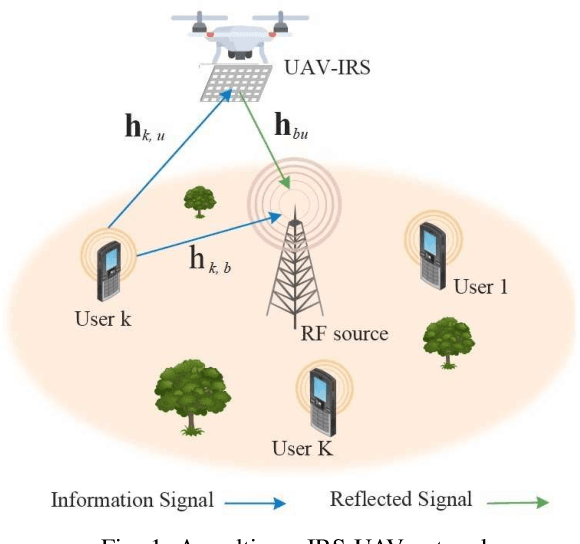
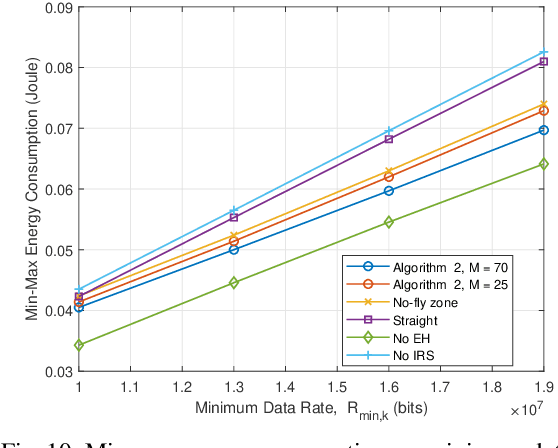
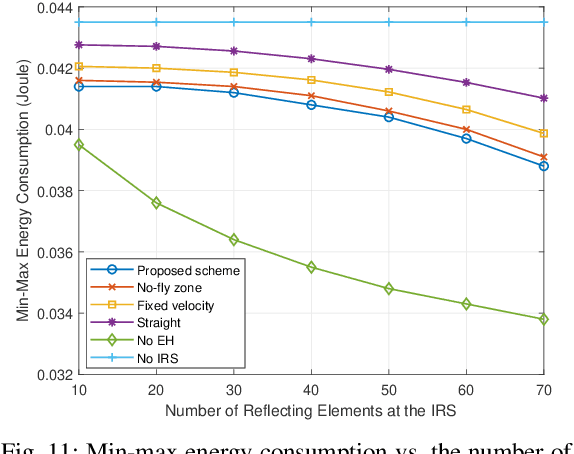
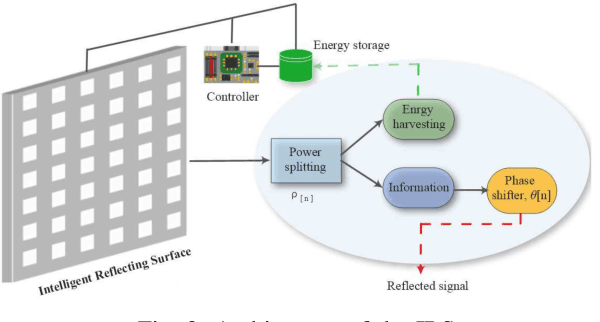
Abstract:This paper investigates user scheduling and trajectory optimization for a network supported by an intelligent reflecting surface (IRS) mounted on an unmanned aerial vehicle (UAV). The IRS is powered via the simultaneous wireless information and power transfer (SWIPT) technique. The IRS boosts users' uplink signals to improve the network's longevity and energy efficiency. It simultaneously harvests energy with a non-linear energy harvesting circuit and reflects the incident signals by controlling its reflection coefficients and phase shifts. The trajectory of the UAV impacts the efficiency of these operations. We minimize the maximum energy consumption of all users by joint optimization of user scheduling, UAV trajectory/velocity, and IRS phase shifts/reflection coefficients while guaranteeing each user's minimum required data rate and harvested energy of the IRS. We first derive a closed-form solution for the IRS phase shifts and then address the non-convexity of the critical problem. Finally, we propose an alternating optimization (AO) algorithm to optimize the remaining variables iteratively. We demonstrate the gains over several benchmarks. For instance, with a 50-element IRS, min-max energy consumption can be as low as 0.0404 (Joule), a 7.13% improvement over the No IRS case (achieving 0.0435 (Joule)). We also show that IRS-UAV without EH performs best at the cost of circuit power consumption of the IRS (a 20% improvement over the No IRS case).
Energy-Efficient Hybrid Offloading for Backscatter-Assisted Wirelessly Powered MEC with Reconfigurable Intelligent Surfaces
Jun 01, 2022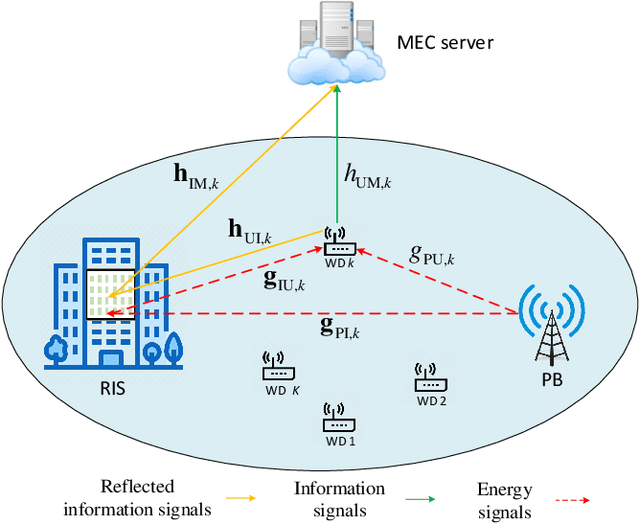
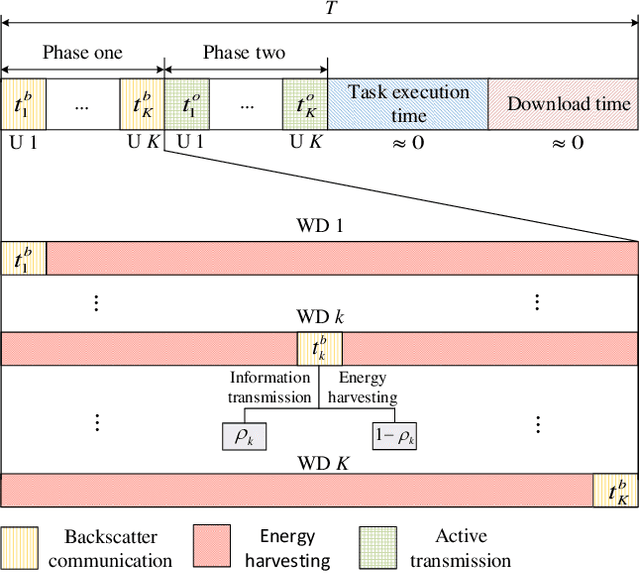
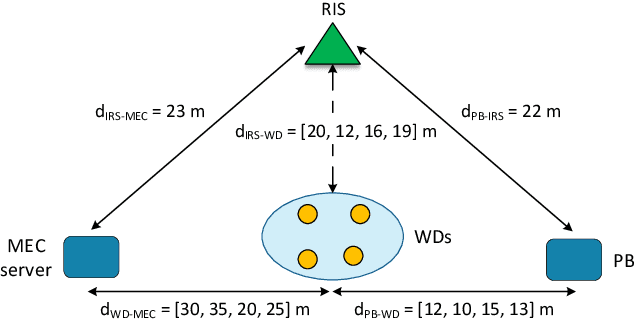
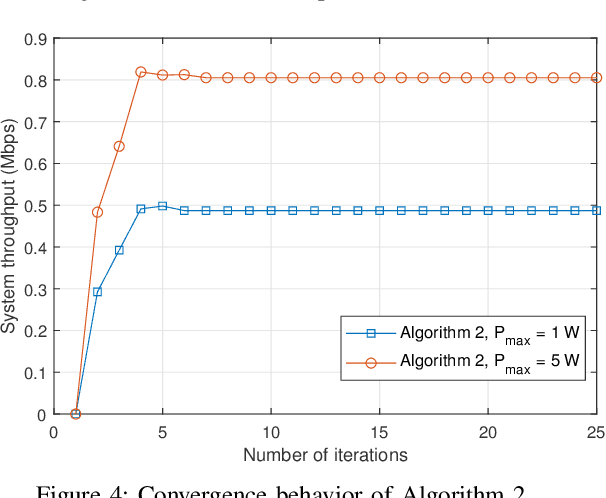
Abstract:We investigate a wireless power transfer (WPT)-based backscatter-mobile edge computing (MEC) network with a {reconfigurable intelligent surface (RIS)}.In this network, wireless devices (WDs) offload task bits and harvest energy, and they can switch between backscatter communication (BC) and active transmission (AT) modes. We exploit the RIS to maximize energy efficiency (EE). To this end, we optimize the time/power allocations, local computing frequencies, execution times, backscattering coefficients, and RIS phase shifts.} This goal results in a multi-objective optimization problem (MOOP) with conflicting objectives. Thus, we simultaneously maximize system throughput and minimize energy consumption via the Tchebycheff method, transforming into two single-objective optimization problems (SOOPs). For throughput maximization, we exploit alternating optimization (AO) to yield two sub-problems. For the first one, we derive closed-form resource allocations. For the second one, we design the RIS phase shifts via semi-definite relaxation, a difference of convex functions programming, majorization minimization techniques, and a penalty function for enforcing a rank-one solution. For energy minimization, we derive closed-form resource allocations. We demonstrate the gains over several benchmarks. For instance, with a $20$-element RIS, EE can be as high as 3 (Mbits/Joule), a 150\% improvement over the no-RIS case (achieving only 2 (Mbits/Joule)).
Single-target mineral detection with site-specific endmember extraction for survey points identification: A case study of Jaffna, Sri Lanka
Sep 06, 2021Abstract:As field surveys used for manual lithological mapping are costly and time-consuming, digital lithological mapping (DLM) that utilizes remotely sensed spectral imaging provides a viable and economical alternative. Generally, DLM has been performed using spectral imaging with the use of laboratory-generated generic endmember signatures. To that end, this paper proposes generating a single-target abundance mineral map for DLM, where the generated map can further be used as a guide for the selection or avoidance of a field survey. For that, a stochastic cancellation-based methodology was used to generate a site-specific endemic signature for the mineral in concern to reduce the inclusive nature otherwise present in DLM. Furthermore, a soil pixel alignment strategy to visualize the relative purity level of the target mineral has been introduced in the proposed work. Then, for the method validation, mapping of limestone deposits in the Jaffna peninsula of Sri Lanka was conducted as the case study using satellite-based spectral imaging as the input. It was observed that despite the low signal-to-noise ratio of the input hyperspectral data the proposed methodology was able to robustly extract the rich information contained in the input data. Further, a field survey was conducted to collect soil samples of four sites chosen by the proposed DLM from the Jaffna peninsula as an algorithm validation and to demonstrate the application of the proposed solution. The proposed abundance threshold of 0.1 coincided with the industrial standard X-ray diffraction (XRD) threshold of 5% for the mineral presence. The results of the XRD test validated the use of the algorithm in the selection of sites to be surveyed, hence could avoid conducting a costly field survey on the assumption of the existence of a mineral.
Transmittance Multispectral Imaging for Reheated Coconut Oil Differentiation
Aug 28, 2021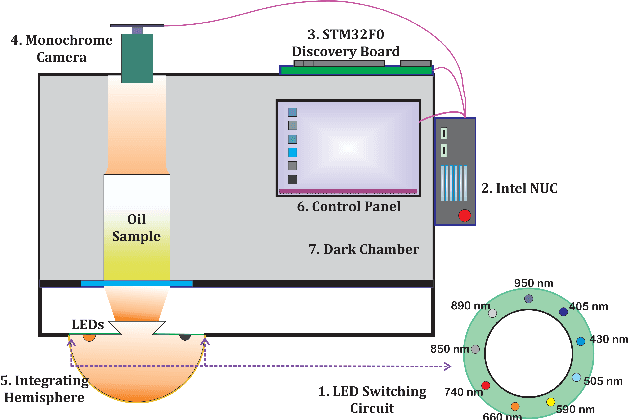

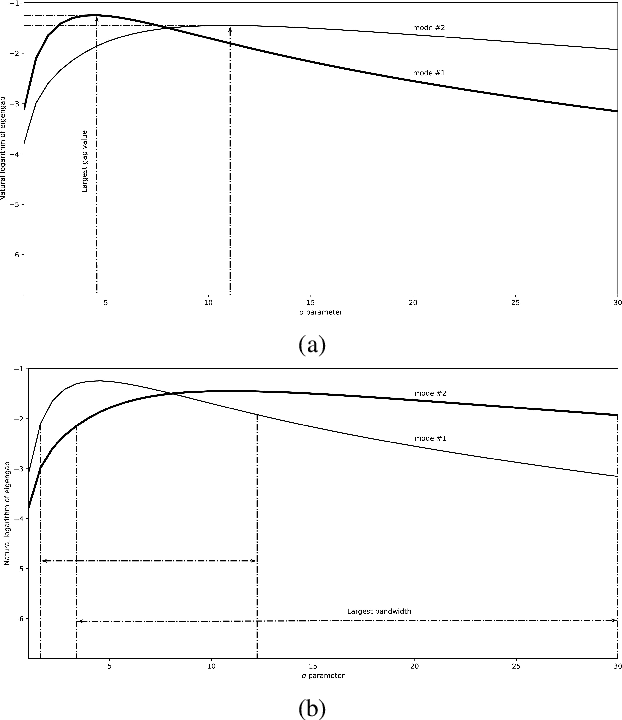

Abstract:Multispectral imaging systems (MISs) have been used widely to analyze adulteration and toxin formation in oil, yet a dearth of attention has been tendered to oil reheating and reusing despite the consumption of such debased oil being deleterious. To that end, the paper discusses the application of MISs to estimate the 'reheat cycle count classes' (number of times an oil sample is recursively heated) and to identify 'critical classes' at which substantial changes in the oil sample have materialized. The MIS captures the transmittance spectrum of the translucent specimen as opposed to other multispectral imaging research which often measures the reflected light from opaque solid samples. Firstly, the reheat cycle count class is estimated with Bhattacharyya distance between the reheated and a pure oil sample as the input. The classification was performed using a support vector machine classifier that resulted in an accuracy of 83.34 % for reheat cycle count identification. Subsequently, to distinguish critical classes under reheating, an unsupervised clustering procedure was introduced using a modified spectral clustering (SC) algorithm. In addition, laboratory experiments were performed to ascertain the ramifications of the reheating process with a chemical analysis. The chemical analysis of the coconut oil samples used in the experiment yielded that a statistically significant change (p < 0.05) had taken place in the chemical properties with reheating and the results of the proposed SC framework were deemed to coincide with the chemical analysis results.
 Add to Chrome
Add to Chrome Add to Firefox
Add to Firefox Add to Edge
Add to Edge